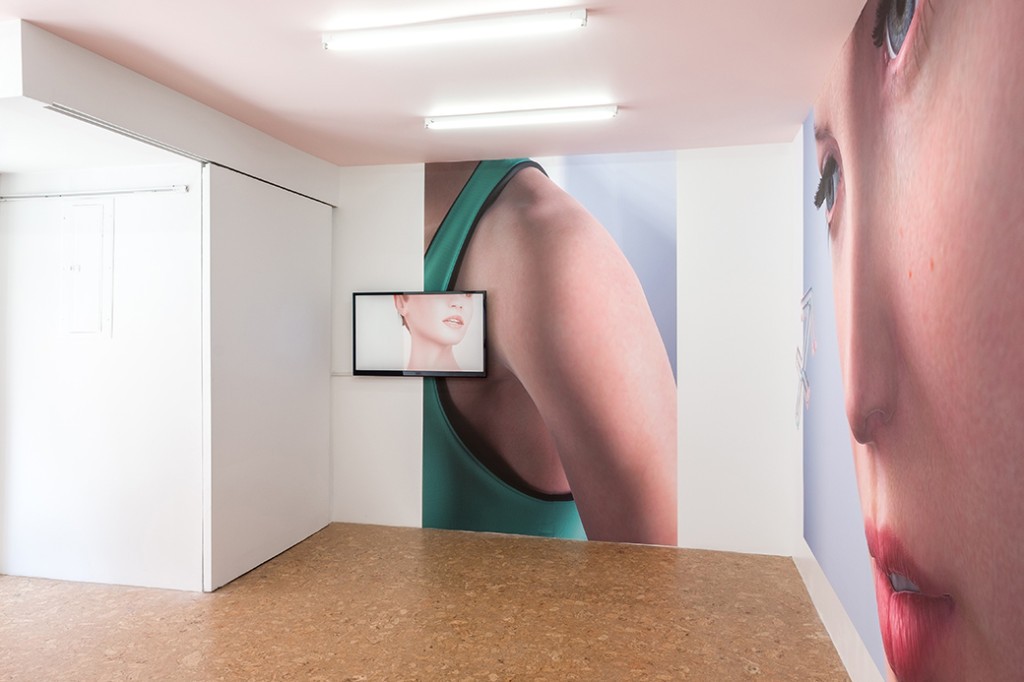Kate Cooper, Rigged 2015. Digital prints, looped HD video with sound, 6:22 min
Kate Cooper’s exhibition at the KW Institute for Contemporary Art in Berlin looks at the agency of the computer generated female within the glossy aesthetics of consumer capitalism.
The work of British artist Kate Cooper inspires immediate physical and aesthetic attraction. A hybrid of consumer associations, ranging from the glossy iconography of the TV commercial and the sterility of video game graphics to the luminosity of the department store poster and the smell of freshly opened cosmetics, create a subconscious lure. Her use of CGI technology in her artistic practice surpasses a simple study of digital textures to occupy a full-fleshed, hyperreal space, usually reserved to corporate giants in advertising or entertainment.
“In the past I’ve made works where I’ve shot things with real life models, followed by a heavy amount of post-production and CGI, but this time all images are entirely constructed. I’m interested in what that entails, the labor involved and the position of those images and what they mean in terms of representation.”
Through her choice of medium and installation, Cooper employs what she calls ‘the language of hypercapitalism.’ She presents her work as billboard-size prints on light boxes similar to those found in the beauty section of any department store. Rather than simply mocking or subverting, her usage of this polished aesthetic appears more as an occupation or redirection of capitalist mannerisms. “It’s very interesting just getting your hands dirty in finding your own agency within this glossy language, to be able to produce it yourself. When working with this technology, I always feel there’s a kind of hacking element to it.”
Cooper’s work expresses an ultimate devotion to and faith in the digitally constructed body. There is a subtle but crucial shift in the discussion on agency and labor within a digital space – surpassing representation, these bodies are now only representative of themselves.
The fetishization of the CG model’s body alludes to the power of the post-representational female subject; the model has her own body with full potential action rather than being merely a representation of a body. She is a she, not an it. “For me, images are no longer representational in themselves,” Cooper adds, “they perform another function, and I’m interested in exploring the possibilities of what that agency could be, what that could produce. It’s very exciting.” By creating models (rather than images) Cooper insists that agency is central and becomes the politicized premise of the work itself.

